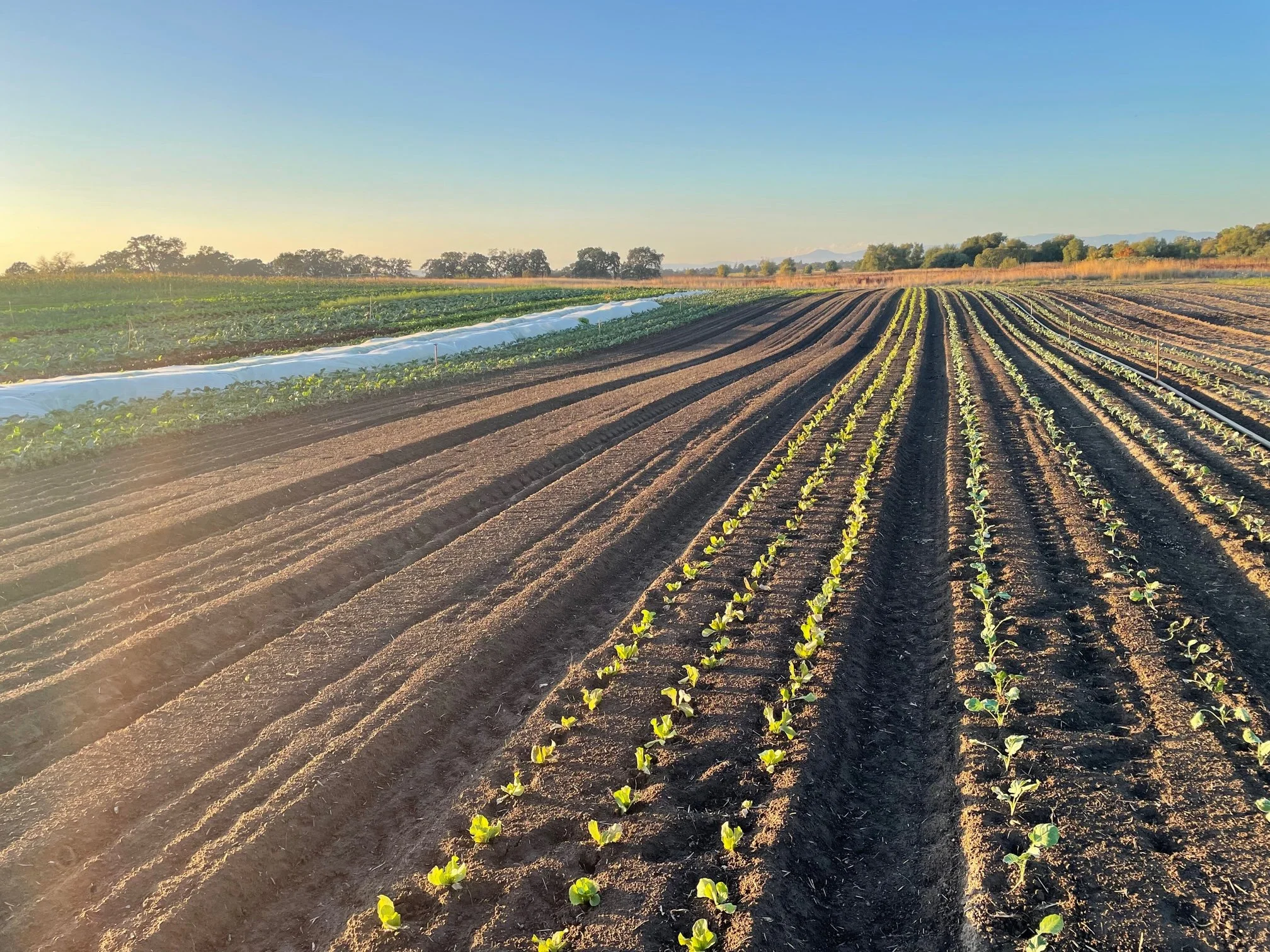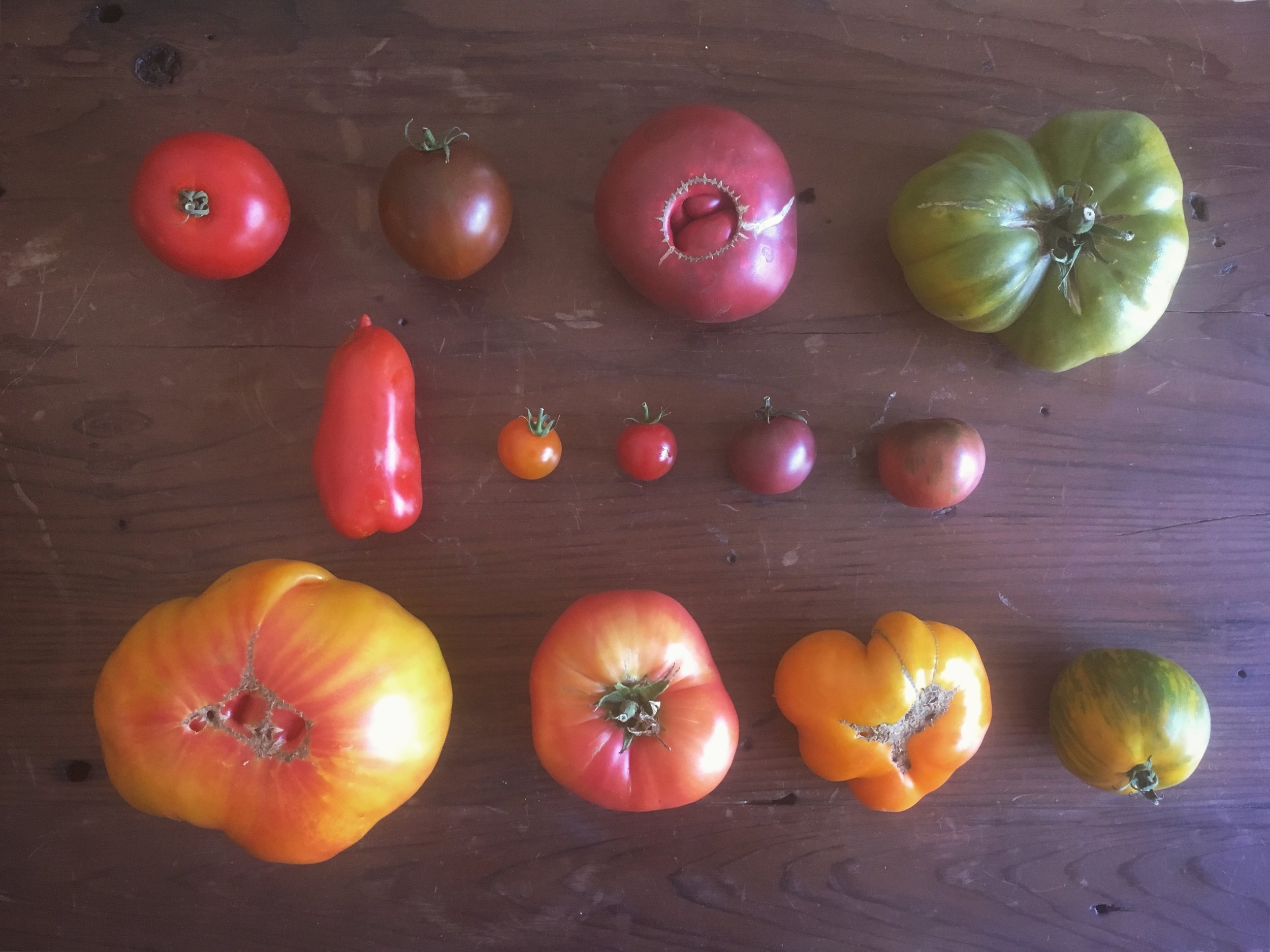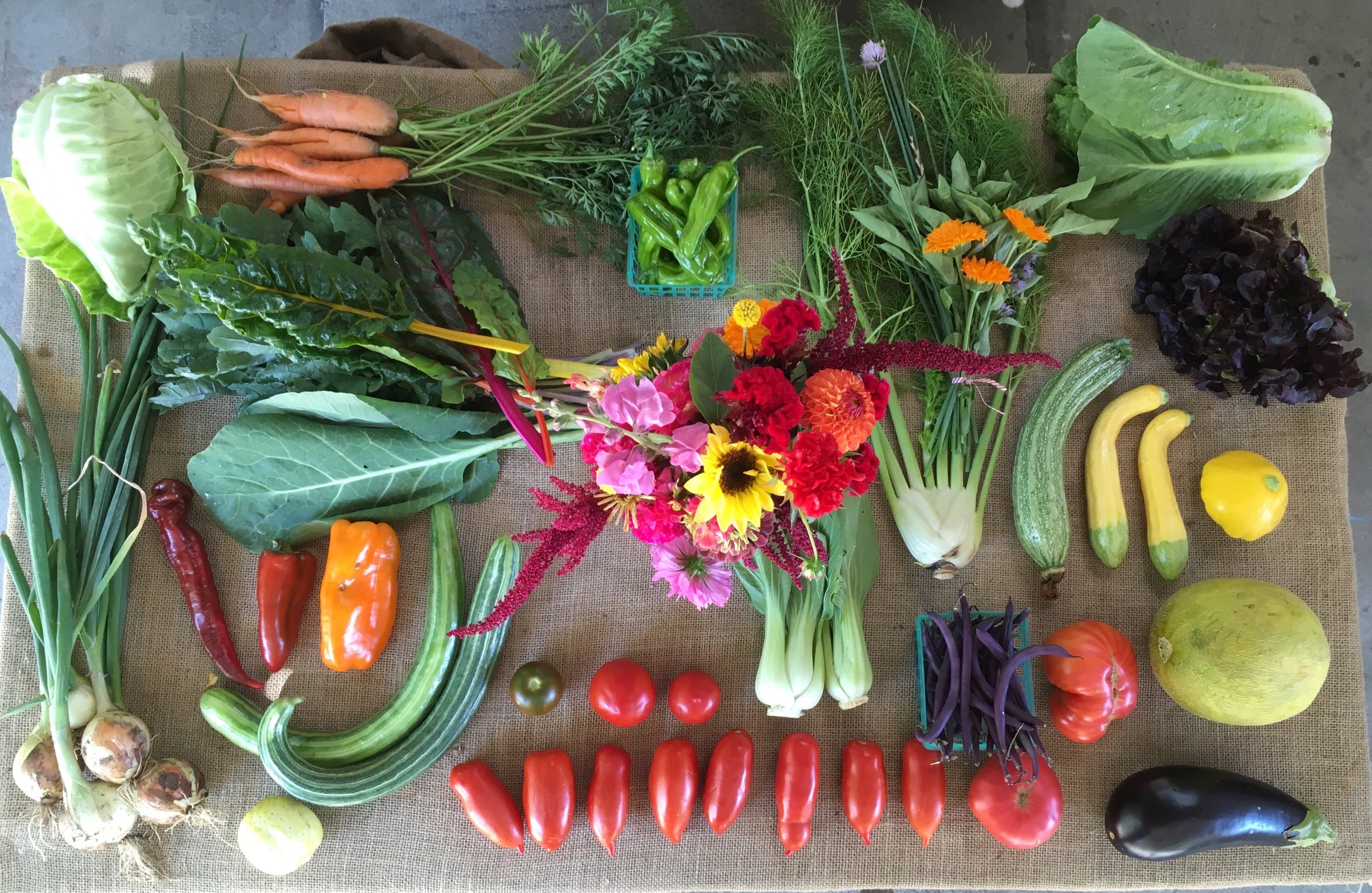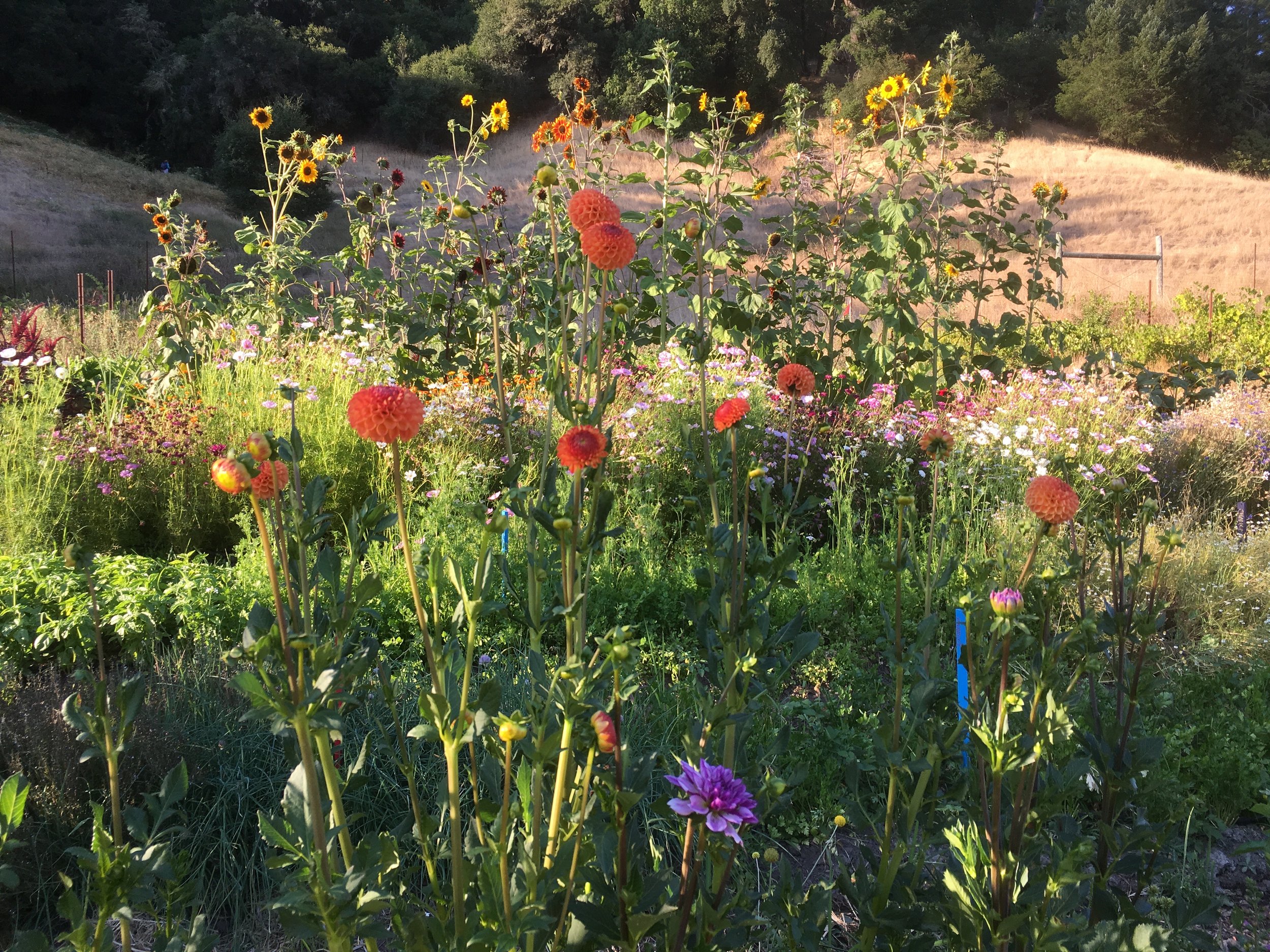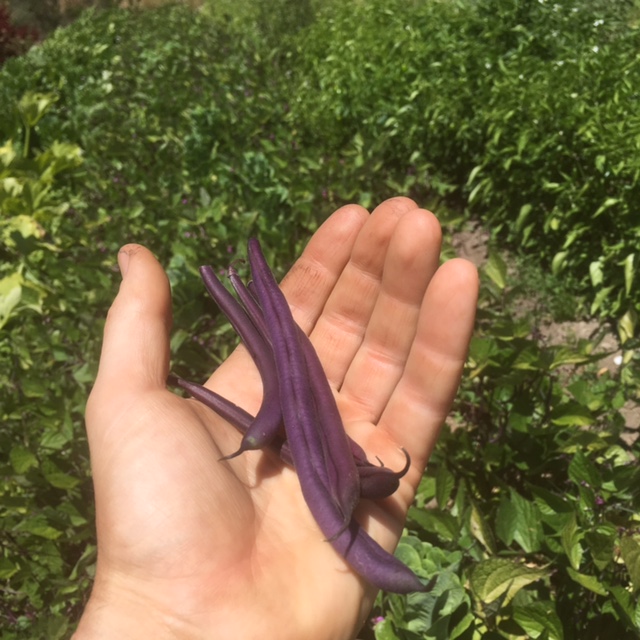Week 9 sample harvest share
FARMERS LOG:
This is a complex time of year on the farm. Summer is here in full force, but Fall is everywhere. Even next season is in the works out there.
Half a years worth of planning, seed starting and plant tending is paying off as the set pieces of summer are in full fruit; the slow developing nightshades (tomatoes, eggplant, peppers) and their cucurbit comrades (melons, cucumbers, squash) adorn our tables, the corn is high, and we are in that special time of year where one can make fresh salsa straight from the farm (jalapeños, onions, tomatoes, cilantro).
2017's Tomato Varieties: (Top to bottom like reading a book) New Girl, Black Prince, Cherokee Purple, Aunt Ruby's German Green, Paisano San Marzano, Sungold, Supersweet 100, Black Cherry, Black Vernissage, Striped German, Brandywine, Yellow Brandywine, Green Zebra. Which is your favorite?
But in the the greenhouses and increasingly in the fields, it is all Fall. Our Fall brassica plantings (kales, cabbage, cauliflower, Brussells sprouts and the broccoli we will be picking off of on into December) are all bursting out of their seeding trays and ready to go in the ground. We planted the Fall storage carrots last Sunday. Parts of the fields, you will notice this week, are bare and ready to be planted into or are in the process of being prepared for what's next. These beds provided our earliest farm meals (spring lettuces, mustard greens, turnips and radishes, the first carrots, beets, and first cauliflower, broccoli and cabbage) and, depending on what was in them before, will see a second crop before being put to cover crop bed in the fall or will be planted into a summer cover crop now. And you would hardly notice but, just underfoot, 8 or 10 inches below the surface of the soil, our potatoes are mostly fully formed, their skins hardening off.
2018 is here in the four beds next to the raspberries. These beds will get a brief summer cover crop of buckwheat, the buckwheat will be occulated, and then these lucky beds will be planted into 2018's garlic in late September / early October.
We hope you are enjoying the summer bounty coming out of the fields and this season of transition on the farm.
See you in the fields,
David & Kayta
THIS WEEK'S HARVEST: Heirloom Tomatoes, New Girl Slicing Tomatoes, San Marzano Sauce Tomatoes, Italian Eggplant, Fresh Yellow Spring Onions, Sweet Peppers, Summer Squash (Italian Zucchini, Crookneck and Patty Pan), Radishes, Striped Armenian Cucumbers, Melons, Broccoli, Savoy Cabbage, Chioggia Beets, Rainbow Carrots, Tatsoi, Red Russian Kale, Dino Kale, Arugula, Spinach, Hearts-Aglow Lettuce Leaf Mix
U-PICK in the GARDEN: Amethyst Green Beans, Frying Peppers, Jalapeños, Husk Cherries, cut flowers, perennial & annual herbs.
U-PICK on the FARM: Wild Himalayan Blackberries, Cherry Tomatoes
PRESERVING THE SUMMER:
Pickling Cucumbers: The 20lb per season quota has been lifted, let the pickle free-for-all commence! If you are interested in more pickling cucumbers, we've got you covered. We'll have 10lb ready-to-go bags in the glass fronted fridge in our barn. Help yourselves. First come first serve. Pickling cukes will be tapering off over the next 2 to 3 weeks.
Green Beans: One of Kayta's and my favorite preserves is pickled green beans aka "Dilly Beans". They are a garlicy, tangy treat to throw on the plate next to pretty much any meal. Our patch of Amethyst Green Beans is loaded and picking is not limited. Here is a great, simple dilly bean recipe (from foodinjars.com) to inspire you.

